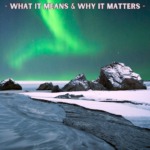Much more than just a line on a map, the Arctic Circle is a gateway to one of the planet's most extraordinary regions. Here's our explanation of the Arctic Circle in Norway, and beyond.
In geographic terms, the Arctic Circle is easy to explain. It is a line of latitude that encircles the globe at approximately 66° 33’ North. But it means so much more, to the people who live there, and to the mariners who cross it.
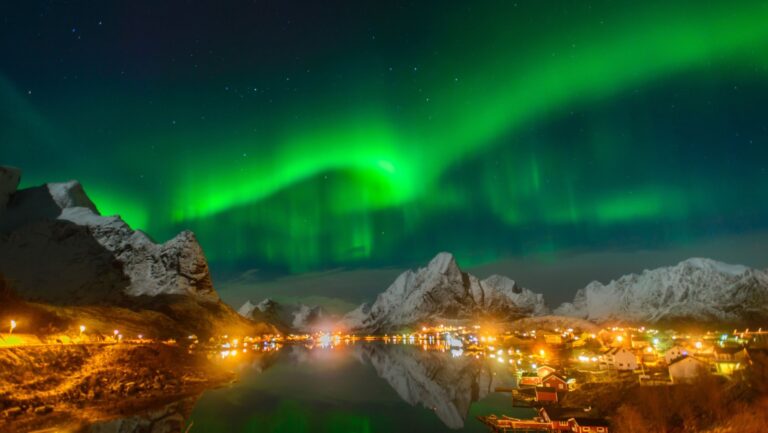
It serves as a significant geographical boundary that separates the Arctic zone from the rest of the world, marking a region of profound natural beauty, unique wildlife, and rich cultural heritage.
In Norway, it's often referred to as the Polar Circle. Read on as we explore the definition of the Arctic Circle, its global significance, and its particular influence on life and travel in Norway.
Geographic significance
At its core, the Arctic Circle is simple a geographic boundary that delineates the southernmost point in the Northern Hemisphere where the sun can remain continuously above or below the horizon for at least 24 hours.
These phenomena are known as the midnight sun in the summer months and the polar night during the winter.
While that geographic meaning is reasonably well known around the world, one fact may surprise you. The circle's exact position is not actually static. It shifts slightly each year due to the tilt of the Earth's axis, moving about 14.5 meters annually.
Norway's Arctic Circle: Light and darkness
Norway, known for its dramatic fjords and the Viking heritage, is also one of the few nations that the Arctic Circle traverses.
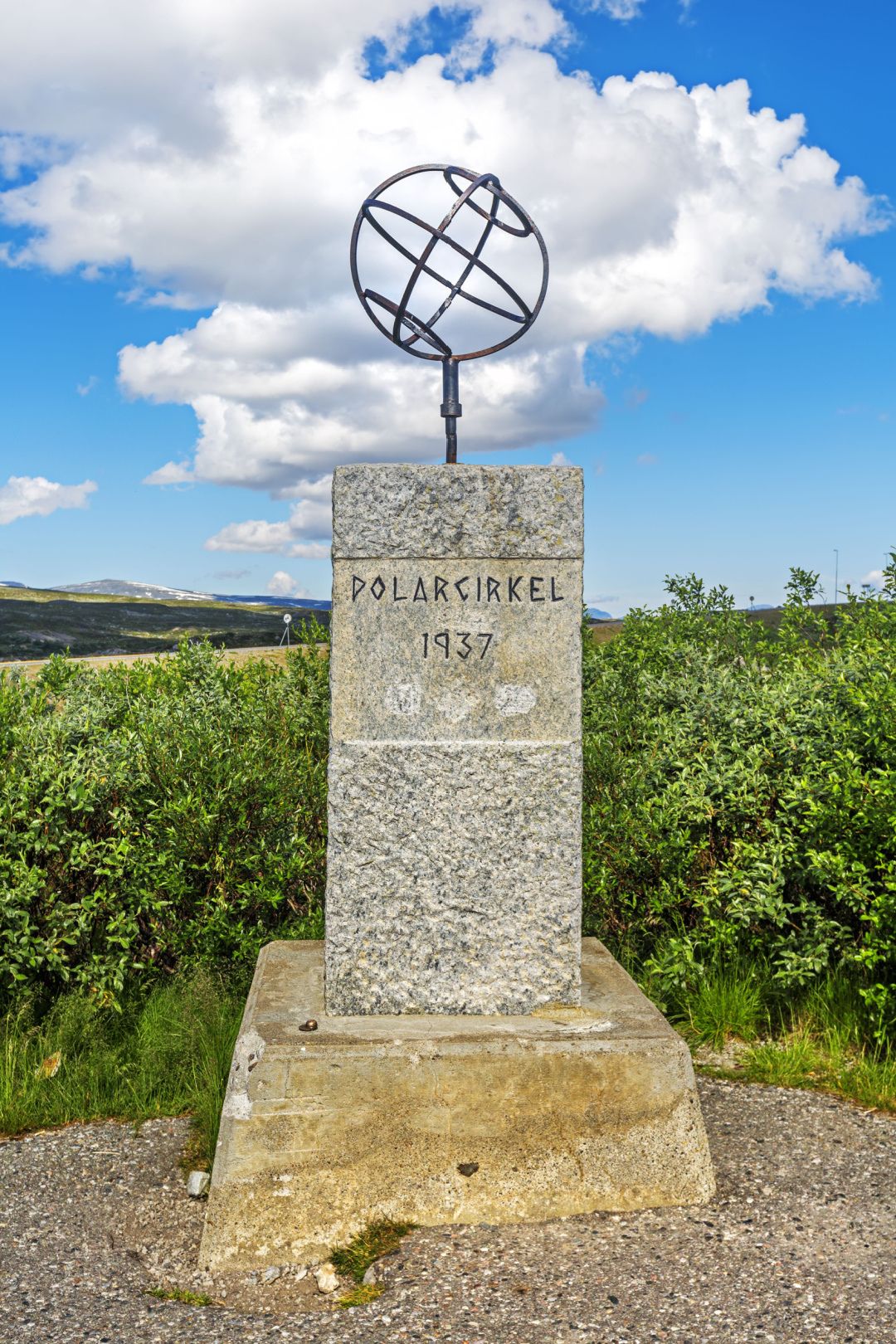
This division creates a land of stark contrasts—a place where the sun doesn't set for weeks in the summer and doesn't rise for weeks in the winter.
The midnight sun in Norway
Imagine a land where the sun hovers at the horizon at midnight, painting the sky in hues of pink and gold. This is summer above the Arctic Circle in Norway; the time of the midnight sun.
The farther north you travel, the more days of midnight sun you'll experience. In the far north of Norway, the sun never dips below the horizon from late May to late July. This time of year provides endless opportunities for activities and a unique rhythm of life.
The polar night in Norway
Conversely, the winter brings the polar night, a time when the sun doesn't rise above the horizon, enveloping the land in a blue twilight for a few hours each day.
Once again, the farther north you are, the longer the period of polar night. In the north of Norway, the period runs from late November to late January.
The Arctic Circle in culture and myth
Crossing the Arctic Circle for the first time is considered a momentous occasion, and in Norway, it's marked with traditions and celebrations.
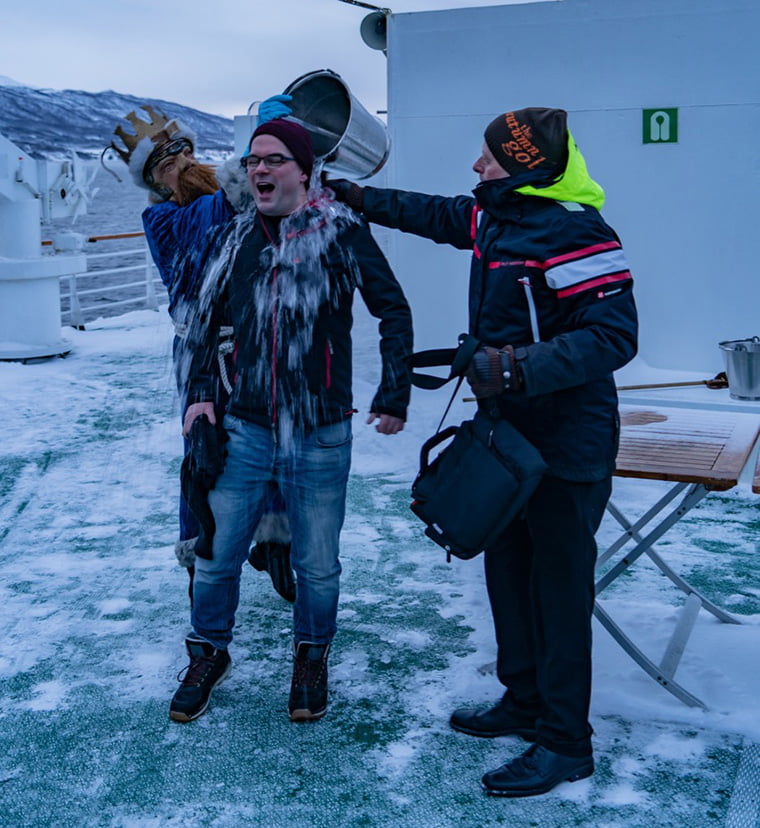
Norway's coastal ferries offer special rites, including symbolic baptisms and ceremonies, to commemorate the crossing. Some mainstream cruise lines also run similar ceremonies, including Fred Olsen Cruise Lines.
On land, monuments and markers, such as the globe on Vikingen Island, stand as silent witnesses to this invisible line. You'll likely see at least one of these when travelling north by land, rail, or ocean.
The Arctic Circle's presence in Norway is deeply interwoven with local lore and culture. The island of Hestmannen, visible from the Arctic Circle, is steeped in legend, said to be a troll turned to stone at sunrise.
These stories and myths are integral to the cultural fabric of the region, adding a layer of mystique to the already enchanting landscape.
The Arctic Circle Centre
If you're driving north on the E6, you'll pass the Arctic Circle Centre. In a relatively remote building, you'll find a small cinema showing an Arctic Circle film, a restaurant, and of course a gift shop.
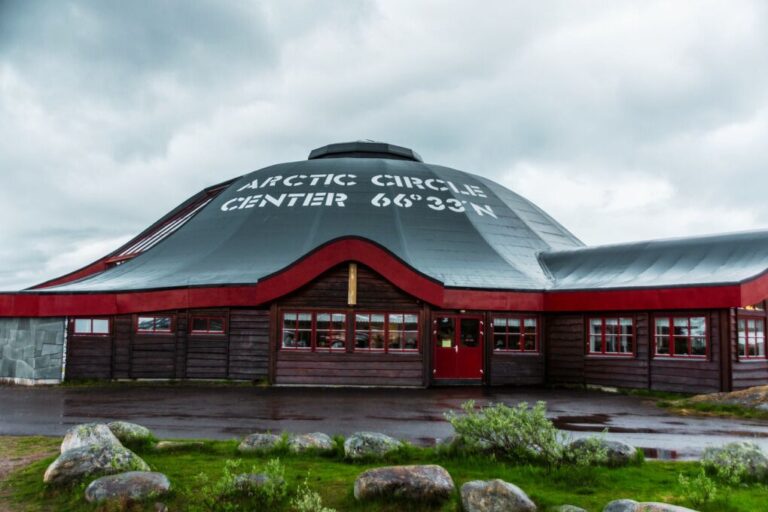
The visitor centre is also visible from the Nordland railway line that connects Trondheim and Bodø, although the train doesn't stop here.
The changing Arctic life
Life above the Arctic Circle showcases human resilience and adaptability. Communities ranging from the indigenous Sami people to newer inhabitants have skillfully adjusted their lifestyles to align with the region's extreme cycles of perpetual daylight and continuous night.
Their traditions, from reindeer herding to ice fishing, are a window into a different way of life.
The Arctic Circle is also a barometer for the health of our planet. The effects of climate change are felt keenly here, with melting ice and shifting ecosystems. The changes in this region have global implications, making it a critical area for scientific research and environmental monitoring.
Travel and sustainable tourism
For travellers, the Arctic Circle in Norway offers an adventure like no other. Whether it's the thrill of chasing the northern lights, the endless days of the midnight sun, or the desire to engage with unique cultures, the Arctic Circle has something for everyone.
It's a place where you can hike under a sun that never sets or marvel at a star-studded sky in the middle of the afternoon.
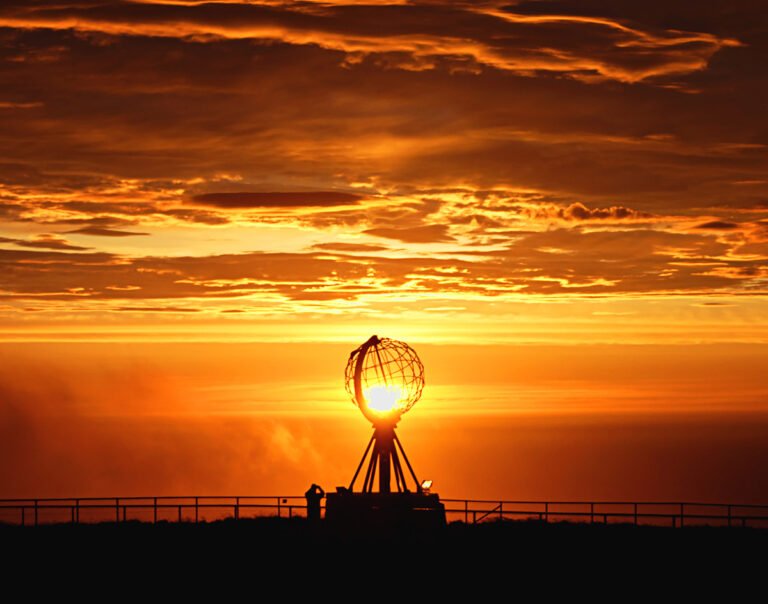
As we come to understand the importance of the Arctic Circle, there's a growing emphasis on preserving its unique environment and culture. Sustainable tourism practices are being adopted to ensure that future generations can also experience the wonder of this region.
Arctic Circle around the world
Of course, the Arctic Circle also cuts through a handful of other countries. In addition to Norway, the Arctic Circle passes through the Nordic Countries of Sweden, Finland, Greenland (which is part of Denmark), and Iceland. It also passes through Russia, the United States (specifically Alaska), and Canada.
Each of these nations experiences the unique phenomena associated with this latitude, such as the midnight sun and polar night, and each has its own distinctive ways of embracing the challenges and beauty of life within this remarkable belt of latitude.
The Arctic Circle transcends its geographical definition, offering a unique blend of natural wonders, cultural depth, and stunning beauty in Norway.
It underscores the planet's varied landscapes and emphasizes the need for environmental conservation.
Exploring the Arctic Circle reveals its integral role in our global heritage and future. It is a destination that promises awe-inspiring experiences, where the natural world defies conventional expectations, with sunlight at midnight and night during the day.
Have you ever crossed the Arctic Circle? Perhaps you've taken part in one of the traditional crossing ceremonies, and maybe even met King Neptune? Let us know your experiences in the comments, below.

